Commercial cardboard recycling
Save money on your commercial cardboard recycling today
Just enter your business postcode…
Save money on your commercial cardboard recycling today
Just enter your business postcode…
Start saving now
Finding the right commercial cardboard recycling collection service for your business can be challenging, but we’re here to make it simple.
Our service connects you with trusted local providers who offer tailored collections to meet your needs and budget. Here are the benefits of choosing a dedicated commercial cardboard collection:

UK commercial waste regulations require businesses to follow the waste hierarchy, meaning cardboard should only end up as general business waste if it is non-recyclable, for instance, when it is contaminated with food.

Dedicated commercial cardboard collections are significantly cheaper than disposing of cardboard in mixed recycling or general business waste. Reduce overall commercial waste collection costs with a dedicated cardboard collection.
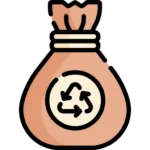
Cardboard waste is a valuable resource for packaging manufacturers. Businesses that generate significant volumes of cardboard waste can negotiate waste rebates from their waste collection provider.

Recycling cardboard helps preserve vital natural resources by reducing the demand for raw materials like wood, which protects forests and supports biodiversity. It also requires 80% less water and 25% less energy compared to producing cardboard from virgin materials.

Recycling commercial cardboard significantly reduces the volume of waste sent to landfills. When cardboard ends up in a landfill, it decomposes and releases methane, a potent greenhouse gas that contributes to climate change.
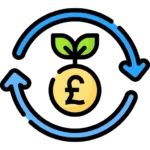
Recycling cardboard plays a vital role in the circular economy by reducing dependence on overexploited natural resources and keeping materials in use for longer. It also redirects financial resources to support the recycling chain.
Recycling your business’s cardboard is straightforward with collections widely available across the UK. With dedicated services, you can ensure your waste is handled efficiently and sustainably. Here’s how it works:
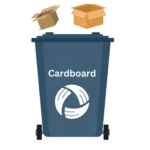
Your waste provider will supply a commercial waste bin specifically for recycling clean cardboard. Proper segregation of clean cardboard from other waste types ensures it remains uncontaminated and fully recyclable.

Your cardboard bins will be emptied as part of your commercial waste collection schedule, which you agree upon with your provider. To avoid disruptions, ensure their waste lorry has clear access to your premises at the designated times.
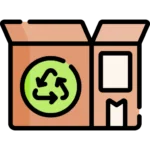
Your waste provider will use their waste carrier licence to transport your cardboard to a recycling facility. These facilities process the material into new products, reducing waste and conserving resources.
Our business waste experts have helped thousands of businesses take advantage of a commercial cardboard recycling service. Here’s how our process works:

Provide your location, collection frequency, and bin requirements using the form at the top of this page.

Our waste experts will match you with the best cardboard recycling provider and deliver a competitive, no-obligation quote.
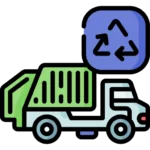
Once you have signed the commercial waste contract, your bin will be delivered, and collections will begin at a time that suits you.
When it comes to commercial cardboard recycling, we stand out from the competition with our unmatched services and benefits. Here’s why you should choose us:

We offer commercial cardboard recycling services across the whole of Britain, ensuring businesses of all sizes can access reliable commercial waste services regardless of location.

We work with only the best commercial waste providers, ensuring your business gets the highest quality service backed by trusted professionals.

Our team provides you with a tailored quote that suits your specific needs and budget, ensuring you get the best value without compromising on service.
We help businesses of all sizes find the right cardboard recycling service. Whether you’re a small, medium, or large business, we connect you with trusted providers for cost-effective cardboard recycling collections.

For small businesses, we offer flexible weekly or bi-weekly cardboard collections to keep your space organised. Our providers offer affordable, straightforward recycling services that simplify managing your cardboard waste.

Medium-sized businesses typically require more frequent collections, such as twice a week, to manage larger volumes of cardboard. We connect you with providers offering services that can handle higher cardboard waste volumes.
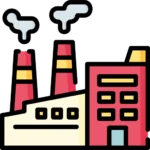
Large businesses benefit from daily cardboard collections and specialised services, such as cardboard balers, to manage high volumes of waste. We work with providers to offer tailored services that meet your specific cardboard recycling needs
There are several ways to arrange the collection of cardboard from your business. The best solution depends on the volume of cardboard your business produces and the space you have available.
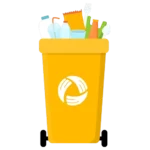
For businesses generating small quantities of cardboard, include it in your commercial dry mixed recycling service. This allows you to recycle most types of cardboard easily alongside other waste. Your waste collection provide will separate your cardboard waste at a local material recovery facility.
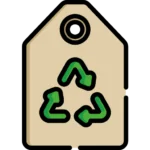
For businesses with smaller amounts of cardboard, stickered collections allow you to bundle 10-15 flat-packed cardboard boxes. You can place a sticker on each bundle for collection. This is an ideal solution for businesses that don’t need a dedicated bin but still want efficient cardboard disposal.

A dedicated bin is the most efficient solution for larger volumes of cardboard. These bins allow you to store cardboard separately from other waste types, avoiding contamination. In high-volume environments like retail, cardboard balers can compact cardboard into manageable bundles, saving space.
The cost of commercial cardboard recycling depends on several key factors. We look at these factors below to help you understand the pricing.
💡 We can simplify pricing with our clear, tailored quotes. Enter your details in the form at the top of this page to get started.

The more frequent the collection, the higher the cost. Businesses with high volumes of cardboard may require daily or weekly collections, while others may only need bi-weekly or monthly pickups.

The size of the cardboard bin required will affect the price. Larger bins or specialised services like cardboard balers will cost more, but they provide efficient storage and handling for higher volumes of waste.

Costs can vary depending on where your business is located. Areas with limited waste collection services, facilities, or transportation costs may have higher fees.
Commercial cardboard recycling offers significant financial benefits for businesses. Here’s how it can help you save:
Businesses that generate large volumes of cardboard waste can often negotiate recycling rebates with their provider. Recycling your cardboard may earn money back, making it a valuable revenue stream.
Dedicated cardboard recycling services are often more cost-effective than disposing of cardboard in dry-mixed recycling bins. Separating your cardboard waste can reduce overall commercial waste collection costs, as it prevents contamination and optimises recycling processes.
Recycling your cardboard reduces the volume sent to landfill, helping to lower disposal fees and avoid the landfill tax. Most waste providers charge less for recyclable materials.
Our cardboard recycling collection services are available across the UK. Here are three key locations where we provide expert support:
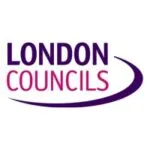
We offer a cardboard recycling collection in London, helping businesses manage their cardboard waste with regular, reliable collections across the city. Find out more on our commercial waste London page.

Our cardboard recycling collection in Brighton provides flexible, affordable services for businesses, ensuring that cardboard waste is handled efficiently and on time. Find out more on our commercial waste Brighton page.

With cardboard recycling collection in Leicester, we offer dependable services to businesses, helping you manage cardboard waste easily and conveniently. Find out more on our commercial waste Leicester page.
Our business waste experts answer the most frequently asked questions about cardboard waste businesses produce.
Cardboard recycling typically occurs within Britain at cardboard manufacturing facilities (rather than being exported abroad like other waste types). Here are the locations of cardboard recycling facilities for the two biggest manufacturers:
Cardboard waste is typically recycled into new packaging products at cardboard manufacturing facilities.
Visit our page on recycling processes for full details of how cardboard waste is recycled.
In 2021, 5.4 million tonnes of cardboard and paper packaging waste were generated in the UK. This is equivalent to the weight of 1,000 cruise ships or 900,000 adult elephants!
Source: UK Gov statistics
Here’s a link to our UK waste data insights for other interesting facts.
Most cardboard products can be commercially recycled in the UK, including:
The following types of cardboard cannot be recycled:
Commercial waste disposal providers are flexible and can generally schedule collections as often as your company requires.
Small businesses typically use weekly or bi-weekly collections, while large enterprises with bespoke contracts can arrange for daily pick-ups.
Read our guide on commercial recycling for more information.